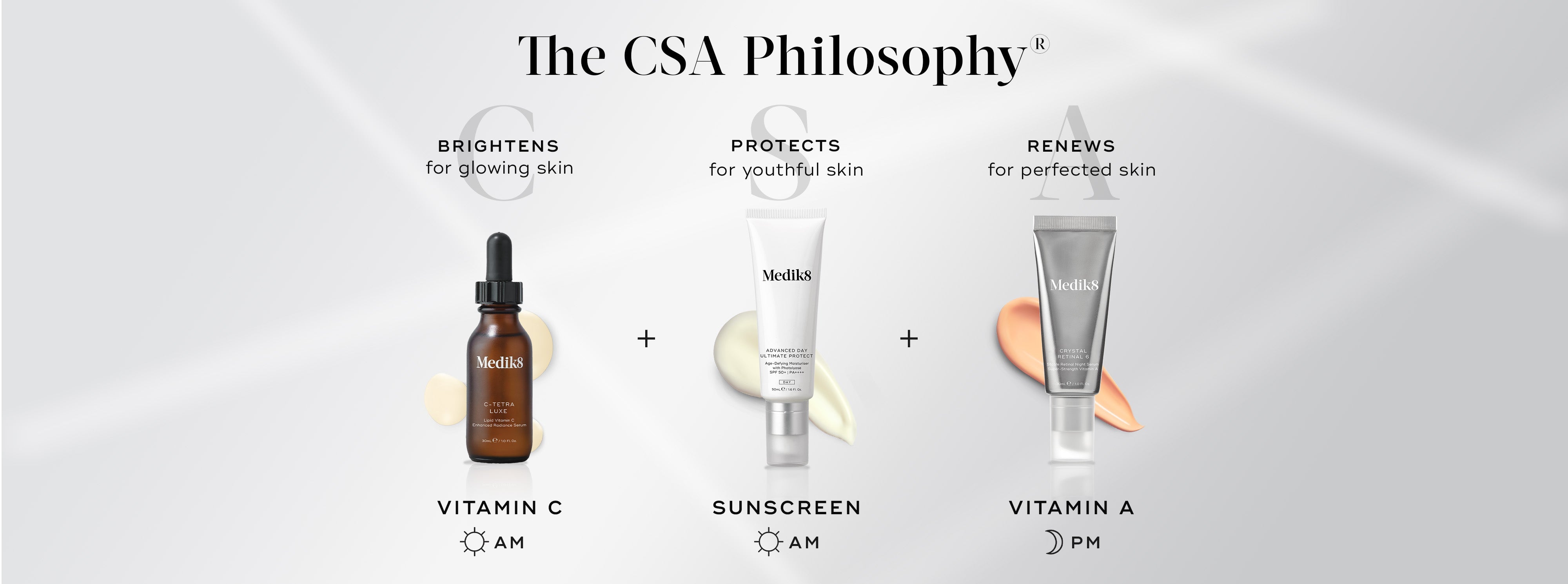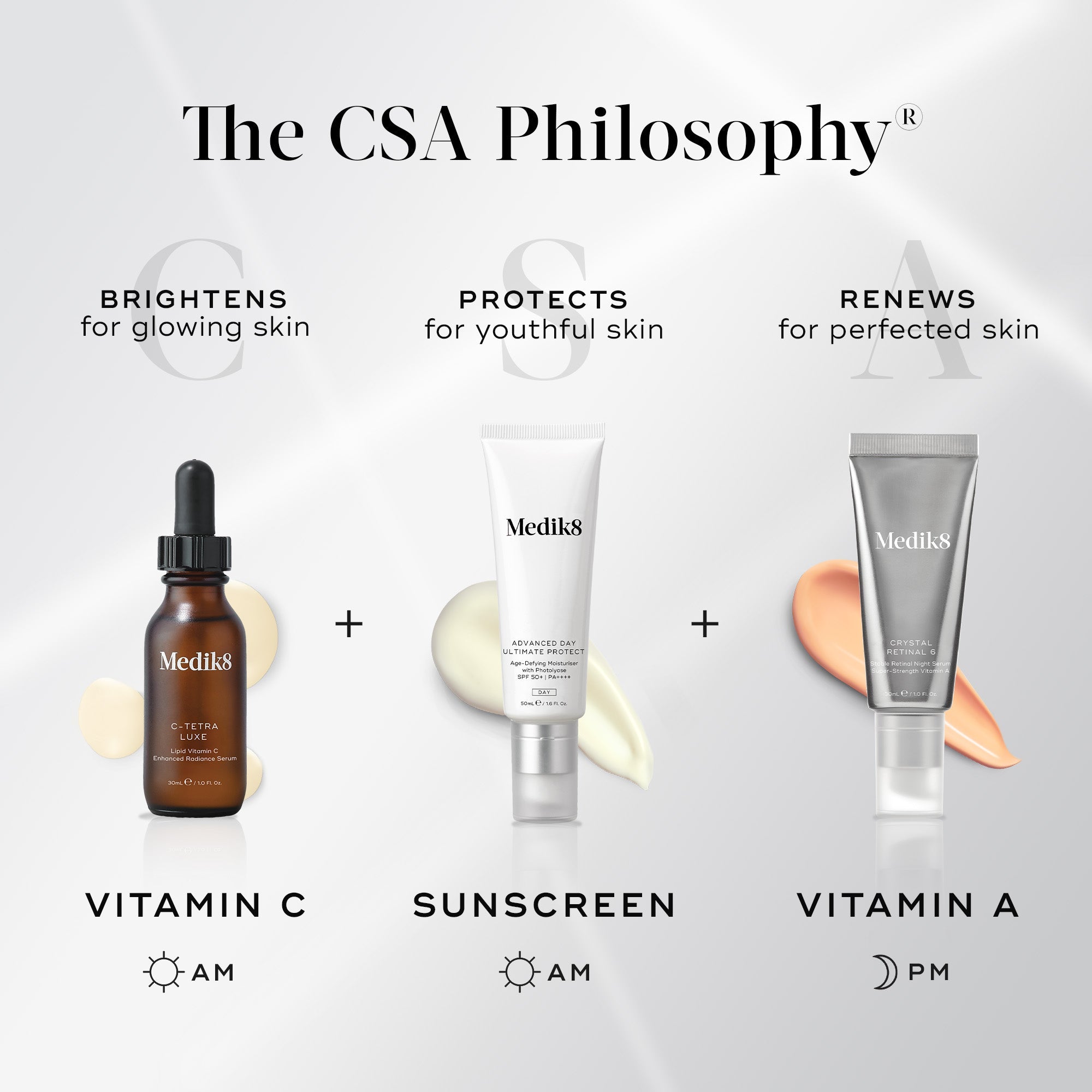Zonnebrandcrème & SPF Specialisten
Er wordt geschat dat 80% van vroegtijdige huidveroudering wordt veroorzaakt door de zon,[1] daarom is dagelijkse toepassing van zonnebrandcrème essentieel voor het behouden van een gezonde, jeugdige huidteint. Onze next-generation zonnebrandcrèmes zijn vakkundig geformuleerd om krachtige, allesomvattende UV-bescherming te garanderen die licht aanvoelt en niet vet is op de huid - perfect voor dagelijks gebruik.
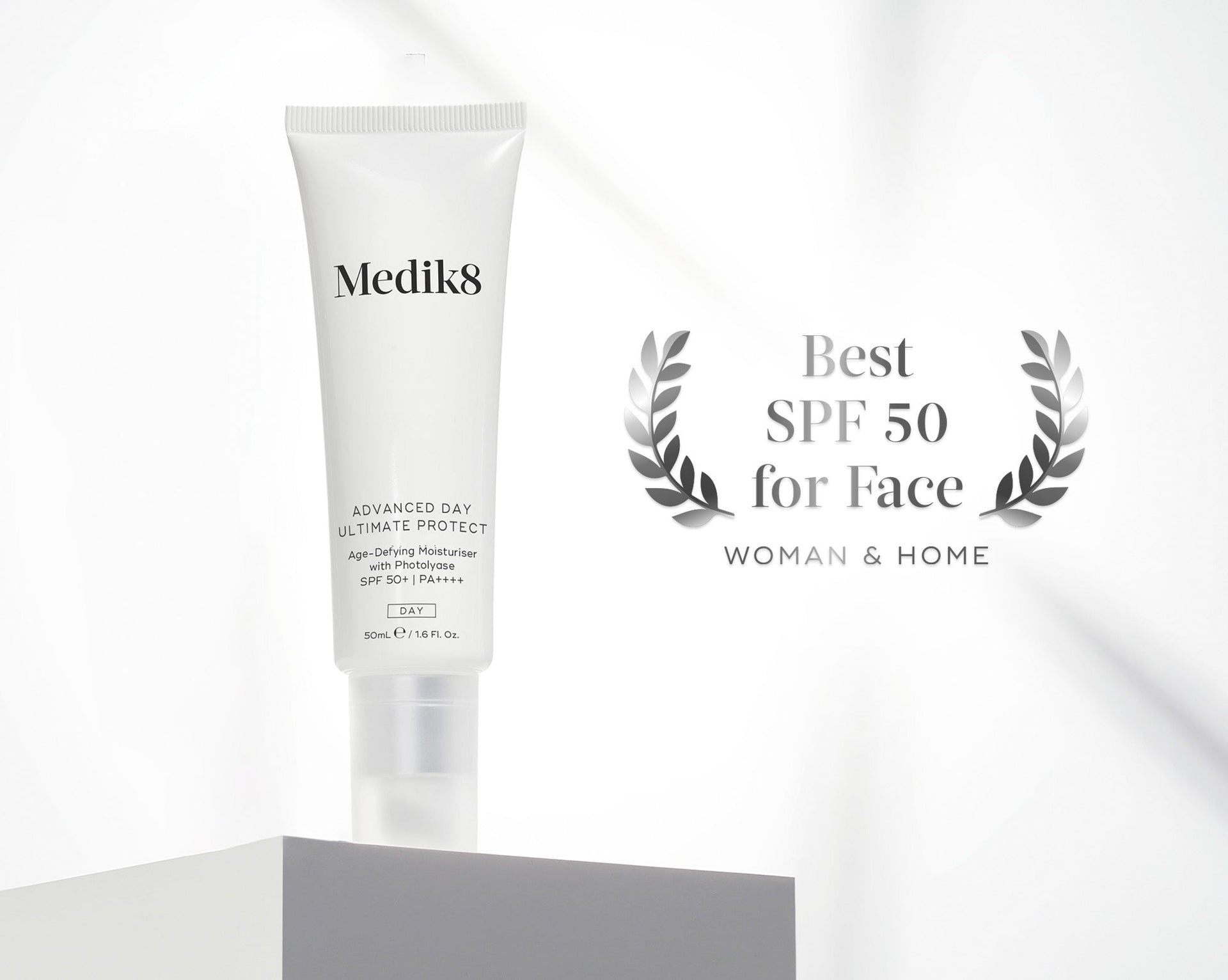
De Effecten van Zonschade
UV-stralen kunnen gemakkelijk door wolken en glas heen dringen, dus zonnebrandcrème met hoge bescherming moet een onmisbare stap zijn in elke anti-aging huidverzorgingsroutine, zelfs op bewolkte dagen.
Zonnebrandcrème beschermt de huid tegen vroegtijdige veroudering veroorzaakt door UVA-stralen, evenals zonnebrand veroorzaakt door UVB-stralen. Beide soorten stralen kunnen bruining veroorzaken en beide hebben op de lange termijn het potentieel om huidkanker te veroorzaken.

Hoe zit het met SPF-waarden
Een SPF-waarde komt overeen met het beschermingsniveau van een zonnebrandcrème tegen UVB-stralen - hoe hoger de SPF-waarde, hoe hoger de bescherming tegen zonnebrand en het risico op huidkanker.
Bij het kiezen van een zonnebrandcrème moet je echter ook letten op 'breedspectrum' formules, sterbeoordelingen en PA-beoordelingssystemen.
Breedspectrumclassificatie: geeft aan dat de UVA-bescherming minstens een derde is van de UVB-bescherming
Sterbeoordelingssysteem: geeft verschillende verhoudingen van UVA- tot UVB-bescherming aan
PA-beoordeling: meet hoe lang het duurt voordat een bruiningseffect optreedt.
Opmerking: De PA-beoordeling van een zonnebrandcrème wordt gevolgd door een bepaald aantal plusjes. Net als bij SPF, hoe meer plusjes, hoe hoger het beschermingsniveau. PA++++ (4 plusjes) biedt een extreem hoge bescherming tegen UVA-stralen en is de maximale beoordeling die een zonnebrandcrème kan behalen.
Kies waar mogelijk voor een hoge SPF-waarde en een 'breedspectrum' formule, evenals de hoogste sterbeoordeling (5*) en PA-beoordeling mogelijk.
Alle Medik8 zonnebrandcrèmes bieden hoge SPF-waarden en 'breedspectrum' bescherming, waarbij ons Advanced-assortiment ook de hoogste sterbeoordeling (5*) voor Ultra UVA-bescherming behaalt. Advanced Day Ultimate Protect biedt daarnaast de hoogste beoordeling van PA++++ bescherming.

Premium zonnebrandcrème bij Medik8
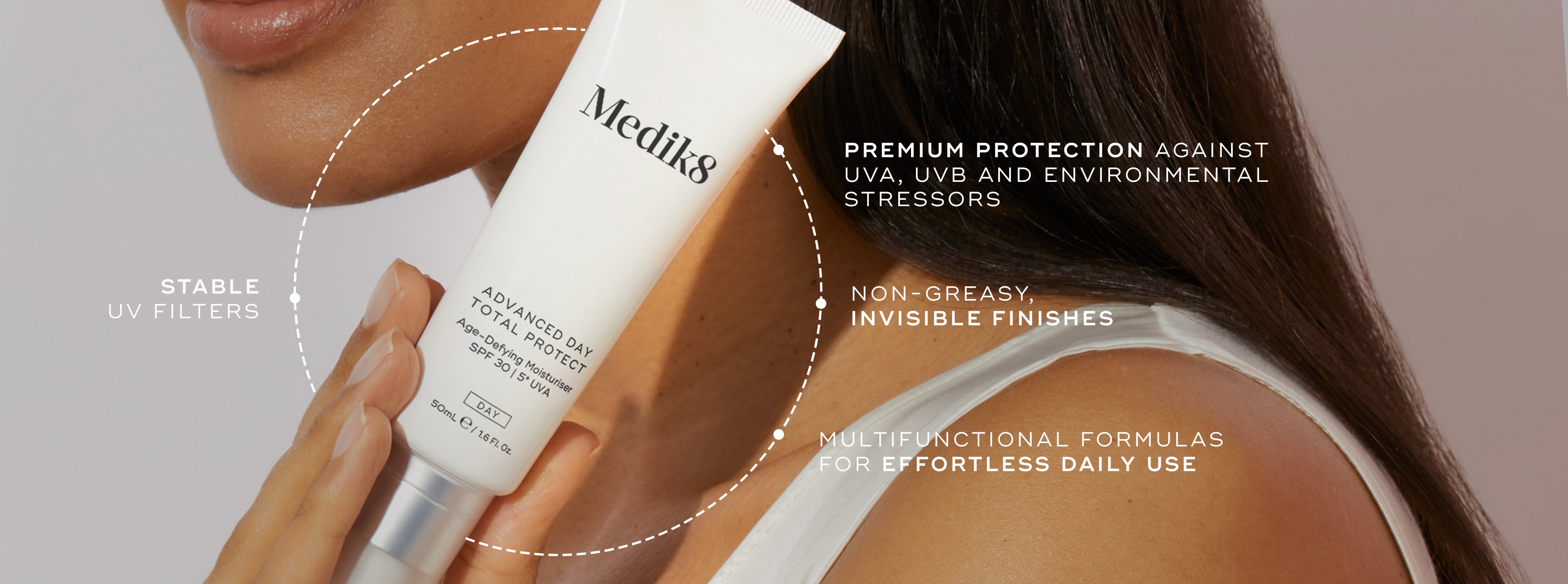
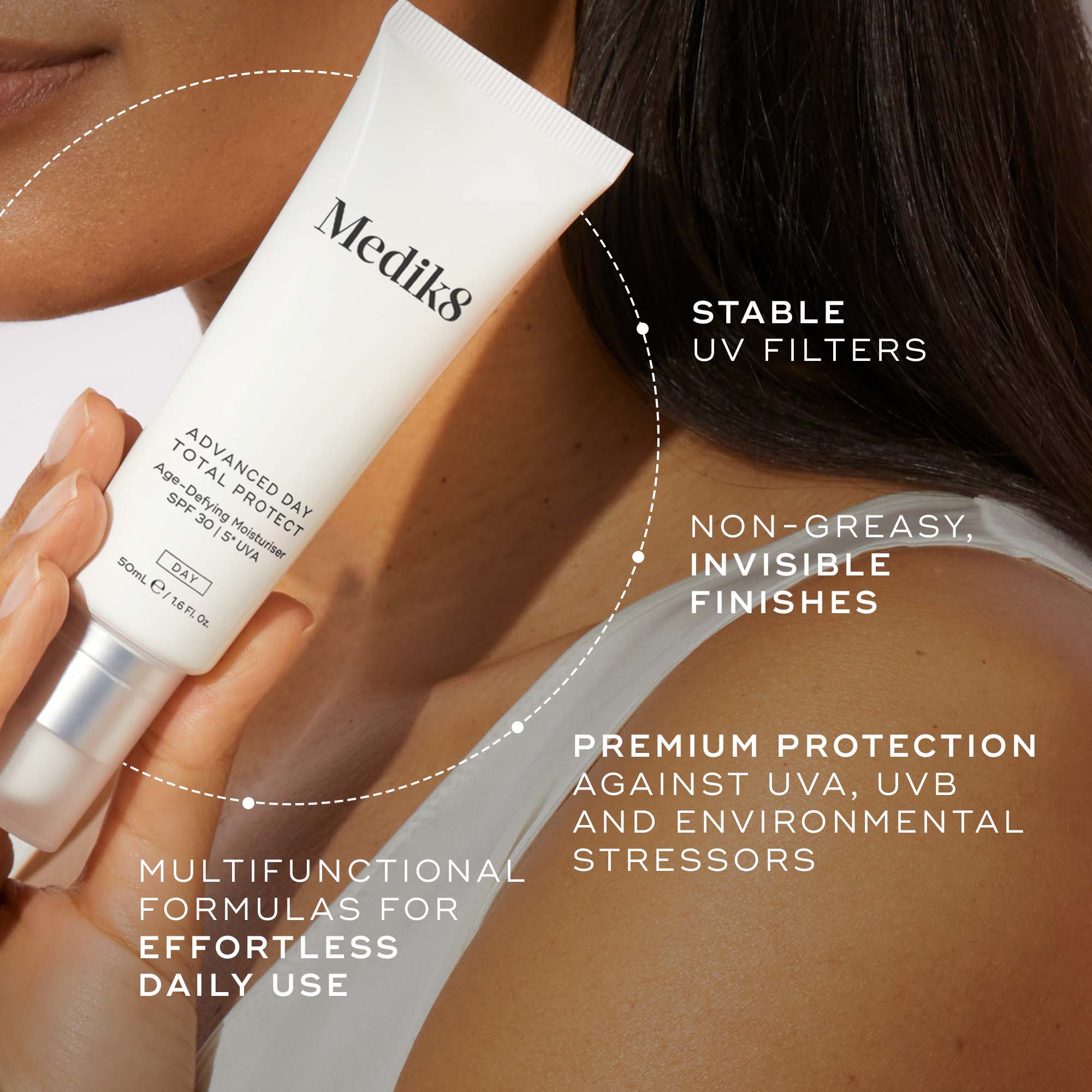
Advanced Day Ultimate Protect
Wat doet het?
- Biedt ons hoogste beschermingsniveau (SPF 50+ PA++++) tegen UV-schade en tekenen van veroudering
- Hydrateert de huidteint diepgaand
- Vermindert in de loop van de tijd de zichtbaarheid van donkere vlekken
- Geeft een onzichtbare, niet-vette finish
Opvallende kenmerken
- DNA-reparatie-enzymen: ondersteunen de natuurlijke reparatiemechanismen van de huid na blootstelling aan UV-straling
- 360° milieuschild: helpt toekomstige tekenen van vroegtijdige veroudering veroorzaakt door blauw licht en vervuiling te voorkomen
Voor wie is het?
- Iedereen die krachtige, allesomvattende bescherming wil tegen UV-stralen en tekenen van vroegtijdige veroudering

Advanced Day Total Protect

Wat doet het?
- Biedt breedspectrum SPF 30 5* UVA-bescherming tegen UV-schade en tekenen van veroudering
- Hydrateert de huid
- Vermindert de zichtbaarheid van fijne lijntjes en rimpels
Opvallende kenmerken
- Lichtgewicht, niet-vette en onzichtbare finish: de perfecte gladde basis voor make-up
- 360° milieuschild: beschermt tegen vervuiling, infrarood, blauw licht en glycatie
Voor wie is het?
- Degenen die een lichtgewicht maar effectieve zonnebrandcrème willen, die moeiteloos onder make-up past
Advanced Day Eye Protect
Wat doet het?
- Biedt SPF 30 5* UVA-bescherming, geoptimaliseerd voor het gevoelige gebied rond de ogen
- Voedt en hydrateert
- Bestrijdt zichtbare tekenen van veroudering rond de ogen
- Bevordert een jeugdiger ogend ooggebied
Opvallende kenmerken
- Anti-A.G.E technologieën: om door de omgeving veroorzaakte tekenen van huidveroudering te bestrijden
- Cafeïne & hesperidine: helpen de zichtbaarheid van wallen en donkere kringen te verminderen
Geurvrije formule: om irritatie rond het gevoelige gebied rond de ogen te voorkomen
Voor wie is het?
Degenen die zachte maar effectieve UV-bescherming willen, specifiek voor het gevoelige gebied rond de ogen

Daily Radiance Vitamin C

Wat doet het?
- Biedt breedspectrum SPF 30-bescherming plus de kracht van vitamine C
- Voorkomt en verbetert zichtbaar tekenen van vroegtijdige veroudering
- Verhoogt de uitstraling van de huid
- Geeft een lichtgewicht, niet-vette en kasjmierzachte finish
Opvallende kenmerken
- Gestabiliseerde vitamine C: voor effectieve verhelderende kracht en antioxidantbescherming tegen omgevingsstressoren
- Hyaluronzuur: Laat de teint gevoed en zichtbaar soepel achter
Voor wie is het?
- Degenen die een beknopt ochtend huidverzorgingsregime willen
- Degenen die op zoek zijn naar de perfecte introductie tot Medik8's CSA Philosophy
Onze Top Tips Voor Het Aanbrengen Van Zonnebrandcrème

Ontdek CSA
Verhoog de zichtbare jeugdbehoudende voordelen van zonnebrandcrème door deze te combineren met vitamine C en vitamine A - volgens Medik8's baanbrekende CSA PhilosophyⓇ, die vitamine C plus zonnebrandcrème aanbeveelt voor overdag en vitamine A voor 's nachts. Volg deze eenvoudige, klinisch bewezen benadering voor een stralende, jeugdige huid.
